Kia Sportage review and buyer's guide
Kia Sportage is an excellent-value medium SUV that can handle both family duties in the suburbs and regional holiday travel. This affordable, reliable and well-equipped five-seater is very comfortable, safe to drive every day on Aussie roads - and now comes in hybrid.
The Kia Sportage is a medium SUV that should be high on your shortlist if you’re in the market for a strong value, highly capable and modern family vehicle that has been tuned for Australian roads.
Sportage performs quite well in all the important criteria expected of a multi-purpose five-seater. It can rival the all-wheel drive capability of a Subaru Forester, the plush interior of the Mazda CX-5, the funky and futuristic design of the Hyundai Tucson, the affordability of the Mitsubishi Outlander and the build quality of a Toyota RAV4.
You can even consider a Kia Sportage against the ubiquitous, economical claims made by the Toyota RAV4 hybrid because Kia now offers Sportage as a hybrid that beats the Toyota on economically rational grounds...
Not only does Sportage get a 7-year warranty but it also means you’re wedded to a brand with a very good customer support culture in Australia, and that’s why it’s among good company in these other vehicles. (They’re all pretty good value, drive very nicely and offer good levels of equipment with decent customer support.)
Sportage isn’t perfect, but it is one of the best for the simple fact it’s such good value, hence it’s among the most popular medium SUVs. Although having said that, in 2024, it was behind some of its aforementioned rivals.
Australians bought 22,210 Sportages, which was a 41 per cent increase over 2023. But it was beaten by the Mazda CX-5 with another 800 units, the Mitsubishi Outlander with another 5000 units, and the RAV4 which brained the competition on 58,700 sales.
You can download the latest Kia Sportage spec sheet here >>
The medium SUV has effectively replaced the conventional large or medium sedan or wagon which was the normal family car for decades. But their primary drawback was the physical access limitations with getting into and out of them. Medium SUVs don’t have the lowering-down or climbing-up aspect to ingress or egress. This means they appeal to a wider demographic, and it makes the operational aspect of getting kids here and there much less tiring.
Additionally, the ability to lift objects and place them more-or-less directly onto the boot floor, and do the same in reverse, has advantages for anybody with lower back issues. This is because you’re not lowering a heavy pram down into the boot of a sedan. It also means you’re less susceptible to scuffing the rear bumper of, say, a sedan when you’re lifting things over the lip edge of the boot.
While it needs to be said that some wagons continue to rival medium SUVs on outright volume in the boot and fuel economy, the advantages of the higher SUV vantage point and entry/exit mobility means they continue to outsell. And that’s where carmaker brands are preferencing their marketing, because SUVs sell - and they also have good resale value for you at the end of your tenure.
Now, when you shop for a Sportage, or similar, you need to love the things you love about that vehicle, and you need to tolerate the things you hate. You’ll love the wide variety of flavours you can choose from, and there is going to be a variant that will suit your budget.
There are plenty of things to love about Sportage, starting with its price - which even allows you to have a manual (that’s right), even in 2025. Below is the important equipment you get for your money.
NEW SPORTAGE IS COMING IN 2025…
If you’re on the fence about buying a new Kia Sportage, it might pay to wait (or act now, potentially) because an updated version is just around the corner, expected in the second quarter of 2025. So bargains on runout MY24 Sportage stock might be possible as dealers attempt to clear stock for the facelifted version arriving mid-year.



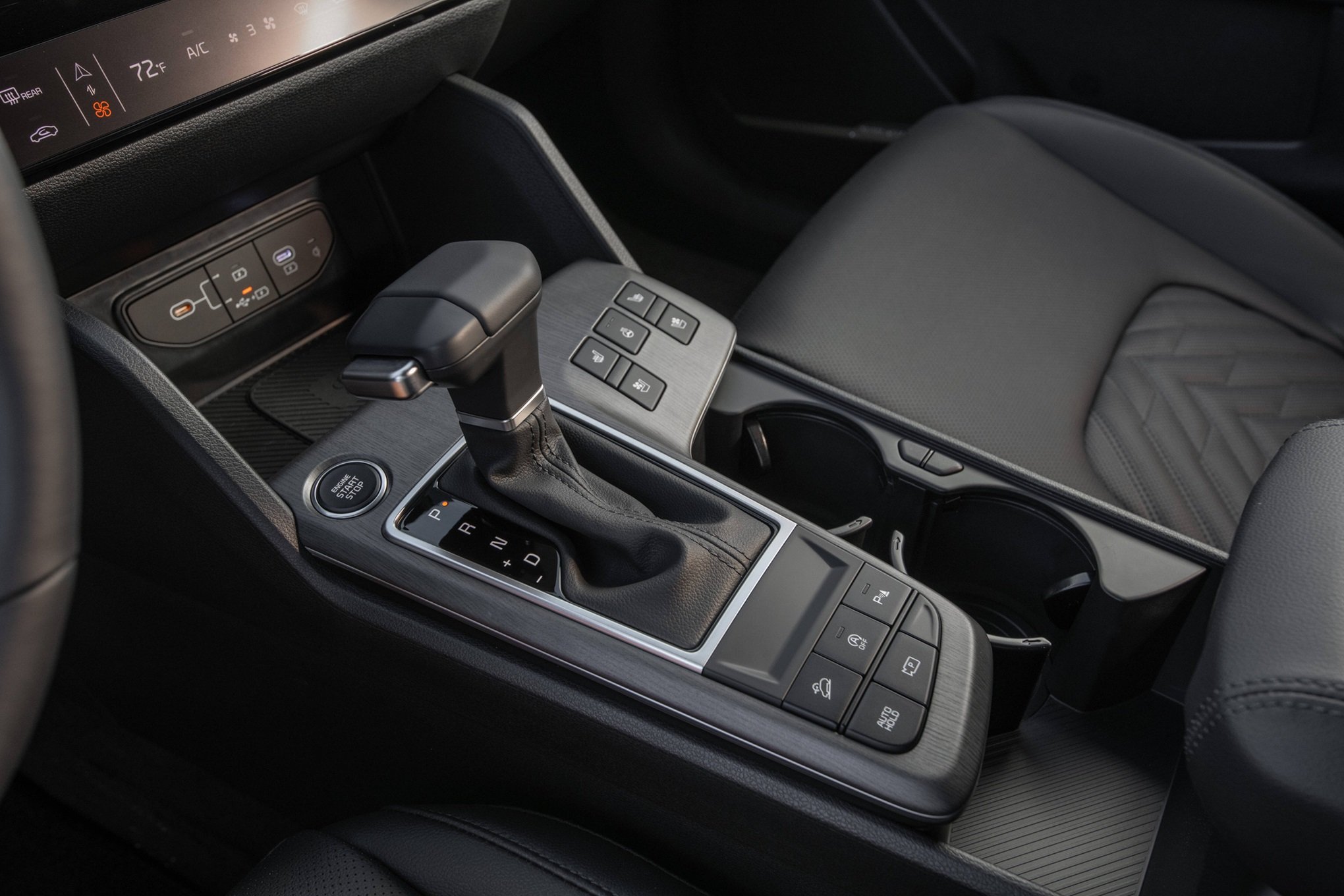
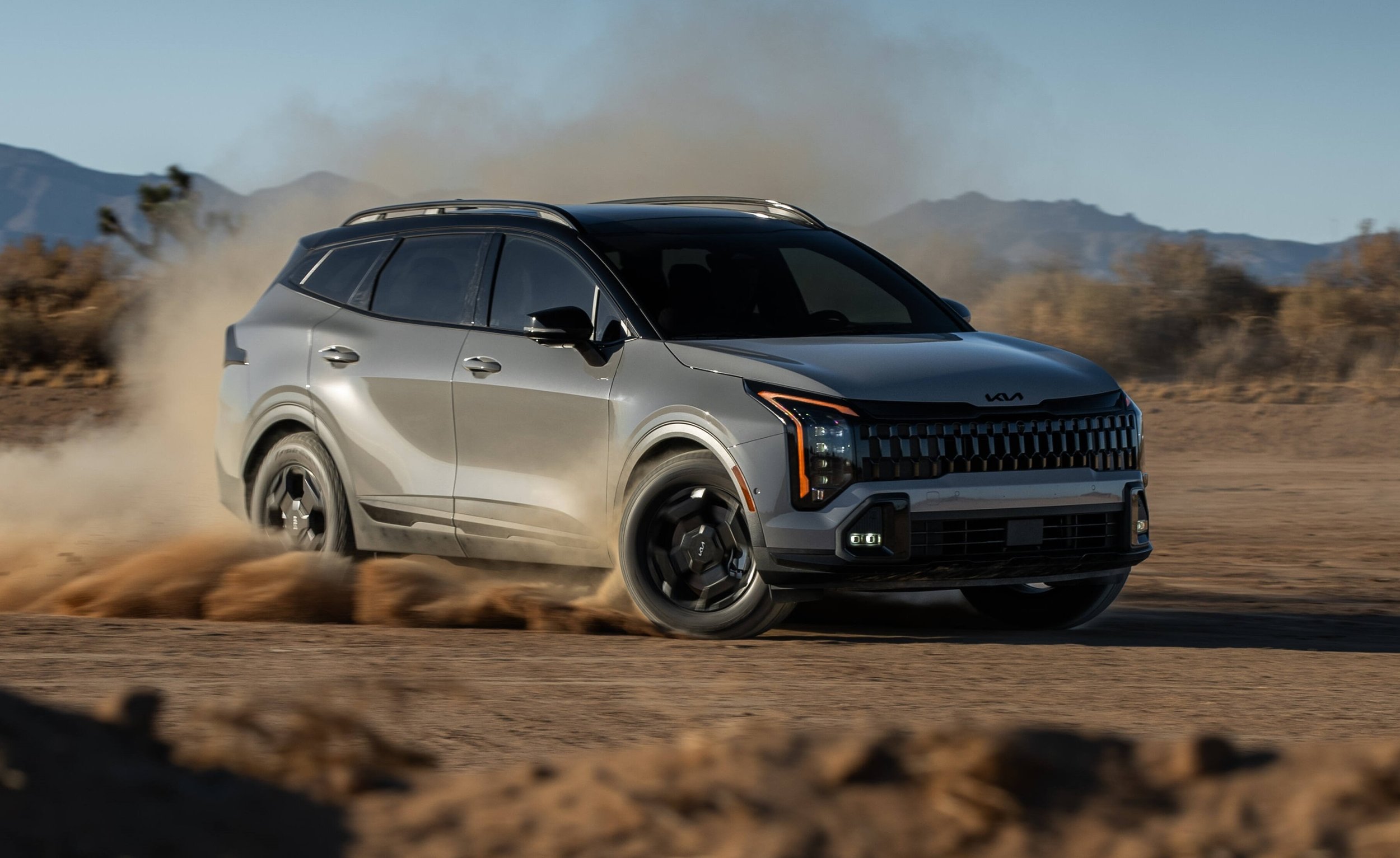
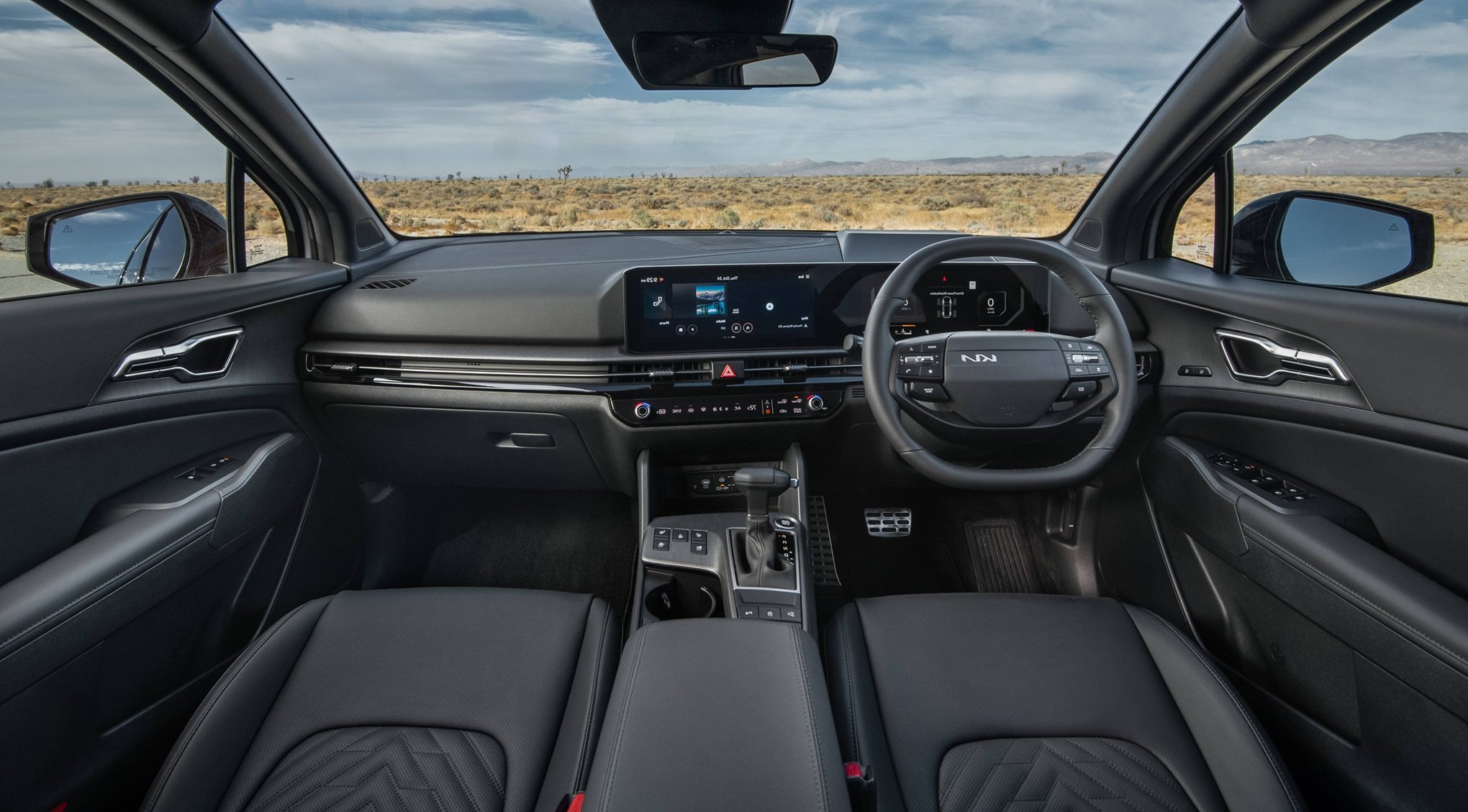
It’s confirmed that the manual Sportage S is gone from the line-up, but thankfully, the diesel powertrain remains, unlike what happened with the Hyundai Tucson in 2024.
The central transmission-by-wire rotary selector stays, as a much more ergonomically friendly concept than the Tucson’s chunky third steering column stalk with its clunky, awkward design with its ambiguous fore-aft twisting action to select drive or reverse.
Depending on your tastes, you might love or hate the new two-spoke steering wheel on the new Sportage, and the same applies to its front-end styling to match the updated Sorento and Carnival. (Note how the indicator light drops down like the make-up cue from the Marylin Manson collection; that’s the new look.)
Australia keeps the same model grades s, SX, SX+ and GT-Line, but powertrains now include all-wheel drive with the 1.6 turbo-petrol hybrid. This hybrid also now gets an 8-speed epicyclic auto transmission as Hyundai/Kia moves away from the dual-clutch.
To Kia’s credit, the AWD systems in the likes of Sportage and Sorento (shared with Hyundai’s Santa Fe, Tucson, Palisade and Staria) is actually a very engaged, active system that is generally doing some level of drive split front-to-rear at all times. (See below for more on this.)
There’s also a tweaked interior design, including the abolition of the turn-key ignition barrel with manual key, replaced by smartkeys across the range and push-button start. Sportage must be among the very last models to get rid of the old-style turn-key ignition.
The GT-Line now gets a head-up display to project speed and cruiser control information onto the windscreen ahead of the driver, and wireless phone charging is now available in the SX+. As a result of Australia making adaptive cruise control mandatory in new cars, Sportage now gets adaptive/radar/smart cruise control standard on the base model S.
FEATURES & PRICING
If you’re fuzzy on choosing the right powertrain, here’s a concise summary about how to choose the right one, with further detail in the ‘Engine’ section of this report.
The 1.6 turbocharged petrol engine with all-wheel drive is a great all-round engine choice, and this is going to better suit if you have mostly school runs, stop-start commuter traffic and shopping but you also like a zippy driving experience. But the diesel has proven very reliable in these circumstances as well.
The diesel-AWD combo makes for a great choice if you need to do plenty of light towing and regional travel for good fuel economy and low-RPM power for pulling trailers and cargo up hills.
The 2L petrol is a good economic choice is the budget is tight and you don’t have any of those frequent, extra-ordinary driving tasks.
Most likely, you’re going to use your medium SUV in a suburban/metropolitan Australian city, so that’s where the Sportage model range is aimed, squarely at the majority of people who are going to use it for school drop-offs, the city commute, freeways and major highways, and the occasional dirt road in the regions.
All pricing below is quoted as before on-road costs. Driveaway pricing will add $3000-4000 approx. depending on the state where you live):
SPORTAGE S
2L petrol FWD 6spd auto | $42,600
2L turbo-diesel AWD 8spd auto | $48,200
Sportage S gets:
Adaptive cruise control
12.3-inch infotainment touchscreen, wireless Android Auto & Apple Carplay, 6-speaker stereo system
Electric folding door mirrors (heated), smart key with push button start
Single-zone climate control, row 2 air vents, extendable sunvisors
Tyre pressure monitoring
17-inch alloys, 235/65R17 tyres (full size spare wheel)
Auto emergency braking, lane keeping, safe exit warning, blindspot monitoring & rear cross-traffic alert
Auto dusk-sensing headlights (halogen), auto high beam
Rear parking sensors, rear camera w/ dynamic guidelines
LED: daytime running lights, headlights (reflector type), partial taillights
Kia Connect & Over-The-Air updates
Smart cruise control
The Sportage ‘S’ is not bad as a simple device with zero pretension and cold, hard functionality at its core. It’s certainly not poverty, but there are plenty of black plastic blanks in the dashboard and centre console. The seats are dull grey cloth and there are no row 2 seat release handles in the boot.
If you need to use your potential new Sportage on rough sealed country roads and gravel roads fairly regularly, you’ll appreciate the 17-inch wheels with higher profile tyres which are much quieter and more forgiving over harsher roads.
If you don’t know why this is the case, essentially it’s because the tyre sidewall is taller and has greater ability to compress under load, which is amplified when the wheels hit corrugations, potholes and undulations in the road - all common on rural roads.
SPORTAGE SX
2L petrol FWD 6spd auto | $45,200
2L turbo-diesel AWD 8spd auto | $50,800
1.6L hybrid (turbo petrol) FWD 6spd auto | $51,400
1.6L hybrid (turbo petrol) AWD 6spd auto | $54,550
The best way to distinguish the SX from the S is the gloss black rear bumper panels, wheelarch trim and side skirts. These same trims are matte black on the S.
On SX you get (in addition to the S):
Satnav w/ 10 years traffic updates
Rain sensing wipers
Driver’s lumbar support (manual)
2nd row seat release lever in boot
18-inch alloy wheels (full size spare)
Dual-zone climate ctrl, auto windscreen defog
12.3-inch LCD infotainment touchscreen, DAB radio, wired Apple Carplay
Once again, a Sportage SX that is going to frequent regional areas is still quite a smart choice, particularly if you go for the diesel which will be great for fuel economy and gets the addition of all-wheel drive - a very good decision if you have farm tracks, gravel driveways or do lots of camping. Even towing a small boat or jetski you’re going to be much better off on the boatramp with smooth diesel power and AWD splitting the torque to all four wheels.
SPORTAGE SX+
2L petrol FWD 6spd auto | $50,000
2L petrol AWD 6spd auto | $52,100
2L turbo-diesel AWD 8spd auto | $55,600
SX+ gets:
Rear view mirror (auto-dimming), smart key remote with push-button start, gloss black door mirrors
Heated front seats, 8-way electric driver’s seat incl. lumbar support, leather interior trim, heated steering wheel
Highway Drive Assist
8-speaker Harman Kardon premium stereo system
Row 2 USB-C charging ports (in side of front seats), rear privacy glass
LED foglights, electric tailgate (hands free), transmission paddleshifters
Wireless phone charger
SX+ is a good middle-ground if your budget can’t stretch to the $50,000 mark. You get the good stereo, the better headlights and seats, and the labour-free tailgate - all tangible items you’ll actually use.
SPORTAGE GT-LINE
1.6L (turbo petrol) AWD 6spd auto | $56,300
2L turbo-diesel AWD 8spd auto | $61,300
1.6L hybrid (turbo petrol) FWD 6spd auto | $62,800
1.6L hybrid (turbo petrol) AWD 6spd auto | $65,900
The Sportage GT-Line finishes the range off with:
360-degree camera w/ 3D mode, blindspot view camera, reverse parking collision avoidance
Ventilated (cooled) front seats, 2-position driver’s seat memory, 8-way electric front passenger seat
LED projector headlights, full LED taillights
Panoramic sunroof (incl. safe-close function)
Steering wheel paddleshifters and rotary transmission dial
Curved dual 12.3-inch digital driver screen + infotainment touchscreen
alloy sports pedals, cargo net, LED interior lighting (front/rear), ambient 64-colour mood lighting,
Remote-controlled parking capability
Unique GT-Line 19-inch alloy wheels
Head Up Display (HUD)
“Dynamic Welcome” lighting (front & rear)
The appeal of the GT-Line is offering all this equipment for a price well under what more notionally premium brands would charge extra for. (Click to enlarge gallery below)
HYBRID
Sportage hybrid comes in two flavours, the SX for around $46,000 or GT-line for $55,400 approximately - driveaway.
Both versions are front-wheel drive and substitute their full-size spare wheels for temporary space-saver spares, typically to make room for the additional battery and motor, as well as the knock-on benefit of reducing some weight.
Here’s what you get on the SX Hybrid:
18-inch alloys (space-saver spare), tyre pressure monitoring
12.3-inch touchscreen, satnav, 4.2-inch LCD driver’s display
Kia’s rotary transmission selector dial
Cloth seats, folding turnkey, dual-zone climate control
6-way driver’s seat (incl. manual height adjust, 2-way driver’s lumbar support
Reversing camera (w/ dynamic guidelines), front and rear parking sensors, electric park brake
And in the GT-line Hybrid you add:
18-inch alloys - down from 19 inches on combustion version; (space-saver spare), tyre pressure monitoring
Smart proxy key with push-button start
Dual 12.3-inch screens (digital driver display + touchscreen infotainment)
Leather seats, panoramic sunroof, heated steering wheel, heated and cooled front seats
360-degree camera, blindspot view monitor, electrochromic rearview mirror
Smart powered tailgate, 8-way electric driver’s seat (including 2-way lumbar support)
Privacy Glass (rear windows and tailgate)
DRIVING
Kia Sportage is one of the best driving medium SUVs in Australia.
The handling of Sportage is exemplary, especially on the high-spec 19-inch wheel and tyre package, when conventionally that wouldn’t be the case. A 1.7-tonne, fairly tall and boxy SUV should be terrible riding on such big wheels on some twisty Australian backwater single-lane dirt road. But it’s not.
Even on bitumen at that 60-80km/h average speed, it is very well behaved in the way other SUVs feel a bit slow to respond, and a bit unnerving when you factor in having to perform an emergency swerve or hard braking manoeuvre.
For anybody who really appreciates the dynamics of a vehicle - how it drives - this vehicle settles really rapidly into a cornering attitude when you tip it in, and then it just hangs in there. And on the way out: same thing in reverse. That’s its big trick. It’s very confidence inspiring.
Two thirds of Australian roads are unsealed, which means sooner or later your medium SUV will encounter a road that either isn’t on Google Maps, or simply hasn’t been graded by a regional council in years. Even if it isn’t unsealed roads you encounter, there are plenty of regional sealed roads which are pockmarked, broken and have eroded edges that can unsettle a vehicle in just the wrong way that can end in a holiday tragedy.
Kia Australia’s ride and handling engineer, Graeme Gambold, (interviewed here >>) was the man responsible for tuning the Sportage. He says the way this vehicle can quickly change direction with minimal body roll and while maintaining dynamic stability is, in part, due to a special damper design with unique characteristics.
Springs are about keeping the body off the road (supporting the load), but dampers are about motion control. Dampers do both of these tasks, but they are especially for motion control. And what Kia has done with this package is quite remarkable.
What this Australian-specific tuning means is that Sportage has a dual personality that makes it quite comfortable in both driving environments - harsh, undulating and poorly maintained rural roads, as well as the more mundane suburban stuff, driving over low-speed kerbs, speed humps, and upgraded sealed roads.
It also means when you’re laden, the Sportage is equally well designed to cope with that additional load in the way a globally tuned vehicle is going to be something you have to tolerate in those adverse conditions. Having fundamental components like springs and dampers that are designed to cope with these environments means greater longevity and more appropriate service life.
Driving the Sportage with dual-clutch transmission in city conditions is a bit love/hate. The DCT is in the 1.6-litre turbo-petrol powertrain, offered in SX+ or GT-Line.
DCTs use a computer to figure out what gear the powertrain is likely to need next. Sometimes, that's really simple in some situations, like being stopped and the lights go green, your foot goes down in first gear, revs increase and the computer recognises second gear is likely needed next. And nine times out of 10, the computer is right, so second gear is pre-selected and bam, the shift happens; it's pretty seamless. If you keep your foot down, it'll pre-select third, and so on.
But there are plenty of situations in traffic where it's easy to confuse the DCT because you're on the gas and then you're off the gas, then someone cuts you off and you're off the gas to brake, then you want to speed up and get into a gap over there, then suddenly you’re off the gas because you need to conform to the new speed of the traffic in that lane.
This is all very difficult for the computer to figure out because it can’t see the road ahead - you have to tell it what’s coming up. The DCT can only read throttle position, revs and what's happening over recent time. It looks for a trend and chooses the next gear, so in these dithering situations where the traffic environment evolves rapidly in between accelerating and decelerating frames of references, it can be a bit unrefined.
But let’s be clear - it’s not actually a bad transmission in any way, it’s just the nature of using it in that environment. More on this in the ‘Transmission’ chapter, below.
INTERIOR
Do yourself a favour: Don’t drive the GT-Line unless you really intend to buy it. Because the interior there will sweep you off your feet. The panoramic, seamless instrument panel and infotainment display is a huge party piece. It’s revolutionary among dashboards for a mainstream car, particularly compared to the tablet-infused dashboard design of most - including Mazda, which is supposed to have an edge on plush interior design.
You might be somewhat sceptical of the absence of a dedicated driver’s binnacle for the revs and speedo, but after driving Sportage in the middle of the day during an Australian November, you’ll be converted. One minor criticism, though is, the speedo and tacho could have been placed slightly closer together to optimise visibility, inside the rim of the steering wheel, but otherwise it’s a very good execution.
The whole interior is better than Euro.
The flipside of this is, of course, that if you jump out of the GT-Line and into a lesser grade of new Sportage, it feels kinda bare. It’s not actually bare, it just feels that way compared with the GT-Line. In absolute terms, it’s not poverty at all.
But if the GT-Line is a stretch, financially, my strong advice is: Don’t sit in it, don’t test drive it. Don’t even approach it. If you do, you’ll overspend. It’s a compelling proposition. Instead, have a look at the SX or SX+ where you’ll get a bunch of nice bits inside, including the Harmon Kardon stereo (which you’ll use literally every single day), without spending too high up for material stuff like the sunroof.
Cabin comfort is such a strength in Sportage. The seats are sublime, refinement is high, noise is very low, vibration and harshness are nicely resolved.
Sportage is fully loaded and beyond good enough to qualify as ‘Euro’. Except, ‘Euro’ cars are generally crap at tolerating our uniquely bad Australian roads.
Thankfully, the designated Sportage media launch drive program was not some hastily contrived cover-up, cleverly selected to gloss over the vehicle’s dynamic deficiencies. The course actually drove through some of the worst roads in greater Sydney: 13 out of 10 on my calibrated Sydney road shit-road-o-meter.
If you like getting out of town and hitting the highway, the seats are very comfortable after a couple of hours worth of continual driving.
This new Sportage is a really structurally rigid platform that’s tuned just-right for Australia. It eats rough roads. It feels Euro even when the roads are anything but. And it’s comfortable and quiet.
More below on engines, towing, Transmission and drawbacks of Kia Sportage.
I'll help you save thousands on a new Kia Sportage here
Just fill in this form.
No more car dealership rip-offs
Greater transparency
Less stress
ENGINES
Sportage is now available as a hybrid in addition to its diesel and petrol powertrains - that makes it the most comprehensive medium SUV for engine choice.
The combustion engines we’ve essentially seen them before, but they are quite modern in terms of efficiency, fuel economy, etc. The diesel in particular is a very good unit for anybody intending to use Sportage on family roadtrips with lots of additional people and gear on board. Jumping out of the 1.6 turbo petrol and into the diesel, you are made instantly aware of the wall of extra low-rpm power.
And even though they’ve done quite a nice job on the software control for the DCT in the turbo-petrol, there is something pretty satisfying about the extra low-end power of the diesel and the drive characteristics of the conventional auto it’s mated to.
The diesel is profoundly more powerful in the mid revs, and certainly this is the engine you should be buying if you can.
Kia Australia says they’ve managed to achieve an 18% reduction in fuel consumption on the 1.6 turbo petrol, with a commensurate cut in CO2. Small round of applause.
The there’s the hybrid Sportage - fertile ground in the medium SUV segment and a new horizon for Kia. But that puts them into direct competition with Toyota’s ubiquitous RAV4 hybrid. So does Sportage offer the better hybrid here?
HYBRID
The Sportage hybrid uses the same 1.6 turbo-petrol unit as discussed above, and amalgamates it with a 1.5 kilowatt-hour battery (that’s the silver box with orange cables attached to it in the image below.)
The battery powers the electric motor squeezed in under the bonnet and offers 44kW to assist in driving the front wheels only. The RAV4 hybrid does have the choice for either front-drive or, for an additional $2000 (or thereabouts), you can have on-demand all-wheel drive which means it essentially runs in 2WD at all times until it detects wheelspin and then engages the rear wheels for assistance. It’s a reactionary measure rather than a preventative one like the AWD in Forester, for example which is constantly in AWD using all four wheels for grip.
So Sportage is front-wheel drive only, which is going to be perfectly suitable for (probably) 90 per cent of your daily driving needs in the city, around town and on the freeway - all scenarios where you’re on sealed bitumen and unlikely to invoke any dire wheelspin. Even on most well-maintained gravel roads you’re unlike to generate sufficient wheelspin that it will be the end of your journey. Just drive with a little more caution and you’re unlikely to have issues.
So how does Sportage’s hybrid system compare to the RAV4’s? They’re basically the same size and offer roughly the same amount of electrical assistance to drive the wheels.
Both systems capture kinetic energy via braking that would’ve otherwise been lost in the form of heat, and that energy is stored in the fairly small battery to be reused during peak moments of acceleration demands - the most common and laborious being stop-start traffic. Getting the 1.7-tonne mass moving from stationary is hard work (much harder than, say, accelerating when the vehicle is already in motion). So this is where a combustion-only vehicle typically consumes the most fuel, by getting itself moving.
Sportage hybrid uses that captured energy to power the wheels up to about 20-30km/h before the turbo-petrol engine kicks in to take over. This is what returns you good fuel economy. The combined-cycle bench test cites 4.9 litres per 100km for Sportage GT-line (the heaviest variant).
RAV4 hybrid in its top specification, the ‘Edge’ in AWD returns 7.0 litres per 100km, which is interesting for comparison, but a bit unfair to the RAV given it has additional weight to make it AWD.
If you look at the lightest RAV4 hybrid, the 2WD GX (which at 1650kg has a 5 per cent weight advantage over the Sportage GT-Line at 1738kg), it is still returning 4.7 litres per 100km. Compared to the 4.9 in Sportage, it’s a negligible difference. So what does this mean?
It means Sportage Hybrid, in its heaviest and therefore most well-equipped model grade, is more affordable than RAV4 Edge hybrid by about $3000 - it’s the best vehicle out of the two for a consumer like you spending your actual money in this situation.
Sportage hybrid is also going to outperform the RAV4 thanks to a total peak power output within 1kW, but a better power-to-weight ratio of 99kW per tonne compared to the 94 in the RAV4 Edge. Even if you pit the lighter 2WD GXL hybrid RAV4 to Sportage GT-Line, the Kia still beats it on power-to-weight, by a whisker.
Any way you cut this, the Sportage hybrid has just equalled or bested the RAV4, the so-called king of fuel economy.
(In case you’re unaware, the “combined cycle” is a combination of suburban-type stop-start driving mixed with some highway driving, simulated by laboratory testing. It never truly indicates real-world fuel consumption, it’s to establish a figure using a controlled environment to give you an approximate guide.)
TOWING
If you tow anything, don’t get fooled by the specs, which will say 1900 kilos max tow capacity for the diesel, and 1650 for the two petrol powertrains. Lest this lull you into a false sense of security, the limiting factor for you is likely to be the maximum permitted towball download of 100 kilos across the board.
So, in practise, irrespective of powertrain, if you said you needed about eight per cent in static towball download to ensure reasonable dynamic stability, then that means, essentially, don’t tow a trailer heavier than about 1250 kilos, with the new Sportage.
Obviously that’s not an insubstantial weight to tow, but nor is it towing the Taj Mahal to Dingo Piss Creek. In practise, it’s not going to be possible to exploit the maximum tow capacity - especially of the diesel.
Sportage hybrid has a maximum braked towing capacity of 1765kg, but with only 100kg of towball download still permitted. What this means is you have a good safe working weight limit if you keep the trailer to about 1500kg. Any more and you start putting a trailer with insufficient about of weight being borne by the tow vehicle, which can cause instability at speed.
Having said this, Sportage hybrid offers better towing potential than the equivalent RAV4 Edge hybrid (in AWD) at just 1500kg - and Toyota Australia doesn’t tell you the official towball download capacity, even in the technical specifications.
TRANSMISSION
The rotary transmission selector on high-spec models is a delight to use. You don’t have to take your eyes off the outside world to use it. A brilliant piece of space-efficient ergonomic design that incorporates electronic switching, but makes it tactile and intuitive.
Twist left for reverse, and right for forwards. Dead easy; you will pick it up in seconds. This setup is infinitely better than Hyundai’s take on switching the same transmissions, in the same generation of vehicles, which involves far less instinctive pushbuttons.
If you're not familiar with what a DCT is, it's a dual-clutch transmission, which is also the same sort of thing as Volkswagen's DSG; a kind of automated manual transmission with two parallel gear trains and a computer that says which one you need next. Essentially, the computer asks, ‘Will it be a shift up or a shift down?’
Obviously, you don't necessarily need to know how these things work in intricate detail, but you do need to know that a dct is different to a standard automatic transmission, also known as an ‘epicyclic’ transmission. It has a torque converter and is a softer and, in many ways, more foolproof kind of design.
The big benefits of dual-clutch transmissions are:
The directness of the shifting. They give a really sporty character to the gear-changing experience.
DCTs also deliver really good fuel economy because you're not wasting any energy in a torque converter and this means you get a slight ‘rubber banding’ feedback in some driving situations. This is across all DCTs from time to time.
So, you get this massive fuel economy benefit of six to ten percent, which you benefit from at all times, whenever you're turning and burning.
The drawbacks with DCTs are:
You really shouldn't use a DCT by abusing it with bad driving habits that are the equivalent of riding the clutch in a manual in traffic. The way you achieve this abuse is if you get to a hill and you go really slow, inching forward under load. Seriously, don't do that. When the traffic moves, just engage and drive. Don’t creep.
DCTs are also not really as good at towing as conventional autos, despite what car manufacturers say.
So, DCT type transmissions get confused occasionally and they might find themselves wrong-footed with the next highest gear when in fact the traffic environment means you need the next lowest gear, so transmission’s computer has to figure that out quickly, and I'd have to say that Sportage’s DCT is one of the best software control iterations that I have seen for this transmission in the current Kia line-up. They've done a really good job evolving the software to cope with those rapidly changing driving situations.
It's still equally good at clear-cut driving in a spirited way on a windy road, it's dead easy for the transmission to know exactly what to do.
I'd have to suggest that many people who drive that 1.6 DCT powertrain in Sportage will be absolutely unaware that it is anything other than an automatic transmission. That's probably the biggest complement you could pay the engineers in R&D who did all the hard work.
FUNCTIONALITY
Kia has done a good job stopping the new Sportage getting lardy. Tare mass has only increased about 20 kilos, despite the shiny new one being bigger everywhere. That’s emblematic of structural design optimisation right there - well done, Kia - and they have used a lot of hot-formed ultra-high strength steel in this one.
GT-Line weighs about 1756kg, which remains on-par with its competitors like CX-5, Forester and new Outlander. The advantage here for you is that payload remains good. You’ll get 460kg of payload in the diesel AWD GT-Line, which means 2 x grown-ups at 100kg each, 2 kids at 50kg each (300kg net) will still have enough for a 20kg tent, some luggage, food and cooking gear for a weekend of camping.
That notional payload only increases as you go back down the Sportage range where the kerb weight decreases. And in the event of a flat tyre en route to your campsite, good news:
You get a full-sized spare tyre across the board. This is a massive win for regional Australia owners, and long-distance drivers. It’s a very good reasons to think twice about RAV4, CX-5, X-TRAIL, and just about every Euro SUV. This is a huge plus for you.
Anybody with a full boot and three kids on board needs a full-size spare wheel keeping them on the road when it’s pouring with rain, sharing the freeway at 110km/h with trucks and morons.
Having said that, the Sportage Hybrid gets a space-saver temporary spare instead. This is one of the necessary trade-offs in order to package the vehicle with its heavy electric motor and battery.
The main benefit here is that by reducing a few kilos in the spare wheel, it makes the hybrid system more effective for people using the vehicle in suburban and city commuter type settings, where you’ll benefit from the added weight of the hybrid system. (See the ‘Engine’ section to understand why ^^).
Perhaps if you do take the Sportage hybrid camping or touring in the regions, take a puncture repair kit so you can retain the use of the full-size wheel, or get it repaired at the nearest tyre shop in a major town.
With the space-saver spare on, you’ll be limited to 80km/h, which isn’t entirely bad news (it’s for safety and stability of the spare), but it does mean a slower trip home. The rest of the Sportage’s capability is hard not to gush over.
With the rear seats up, you’ll get a wonderfully wide space in the boot, with 543 litres of luggage space, potentially. That’s better than CX-5, Forester and Outlander for outright volume. Then, if you need to bring home flatpack furniture or the odd length of timber, you’ve got a substantial 1829 litres of capacity. You could also just get roof racks, of course. Or use a small 6x4 trailer.
Between the wheelarches you’ve got about 1 metre of space, and the same again in length. There’s about 80cm of height in the boot to the roof. The floor is properly flat and offers a small lip edge to catch cargo that might otherwise slide out if you park on a slope.
Also, the cargo blind is mounted nice and high, and as close to the top of the rear seats as possible, without actually blocking you from installing child restraint anchors into their respective top tether points. Speaking of which, you get two pairs of ISOFix anchor points on the rear outboard seats, with corresponding top tether points, and one in the centre position for booster seats.
Capped-price servicing actually means exactly that, with this car. Kia assures us that if you buy a Sportage tomorrow, then the service pricing quoted at the time of purchase will not change for the term of that agreement. So, you will know exactly what you are up for, service-wise, for the standard service items, and it will not be subject to some arbitrary ‘rubbery figure’ fudge, year-on-year.
SAFETY
The Kia Sportage was assessed by ANCAP in 2022 using crash test data obtained by EuroNCAP, when it received a five-star rating. You can download the in-depth Sportage ANCAP report here >>. The vehicle was also tested by the Insurance Institute for Highway Safety (IIHS) and has been continually re-assessed each year, including in 2024. You can see the IIHS Sportage report here >>
For crashworthiness the IIHS rated Sportage ‘Good’ in each of the destructive tests, including the ‘Small overlap’, ‘Moderate overlap’ and ‘Side’ impact tests. The areas where it received less-than-perfect results was for the headlights which, like the Tucson, got an ‘Acceptable’ score overall.
Sportage gets auto emergency braking, a front-centre airbag and ‘Safe Exit Warning’ to detect incoming traffic from the rear (like cars or cyclists) in the event of opening the rear passenger doors. Adaptive/radar cruise control is also standard on the entire range with the exception of manual transmission models on the ‘S’ and ‘SX’ variants where the system requires the electronic intervention available on an automatic transmission - this is normal.
Inadequacy was the general assessment for Sportage’s headlights, particularly around the 200 feet mark where both high and low beams were considered not bright enough. The IIHS headlight test assessed Sportage saying, “visibility was good on the left side of the road and fair on the right side”, with a visibility assessment as “inadequate on the gradual left curve”. High beams do help compensate for the slightly dim low beams.
ANCAP only marked Sportage down a total of 4 points (2 per test) in the oblique pole and full-width frontal impact crash test where some deflection in the dummies was recorded in the torso during these 30 and 50km/h tests respectively. All of this is within a permitted range and still means Sportage is considered quite safe - all vehicles get pinged for something; none are perfect.
Here’s what Sportage looked like during the EuroNCAP conducted tests in November 2022:
The IIHS also recorded deflections that saw ‘acceptable’ ratings applied to torso measurements in the side impact tests which the organisation re-rated in 2024. The Institute says that:
“2024 models of both [Sportage & Tucson]… were (given) B-pillar and door beam reinforcements implemented as well as the addition of a rear seat-mounted side thorax airbag to improve occupant protection in side crashes.
Side 2.0 ratings are assigned by the Institute based on a test of a 2024 Sportage conducted by Hyundai/Kia
If this doesn’t tell you Hyundai and Kia are committed to improving safety and listening to independent safety organisations in order to keep you safe in a crash, there’s not much that will. Hyundai/Kia already had a more-than-acceptable rating and didn’t need to modify the B-pillar, but they did - at their own expense - to make Sportage and Tucson better.
The only other IIHS test in which Sportage received a less-than-perfect score was in the pedestrian detection system at night, using low and high beam headlights, travelling at 60km/h - with the pedestrian dummy moving parallel to the road. In three other similar tests at varying speed and headlight level, Sportage passed by avoiding the collision, but in the parallel 60km/h tests the system reduced the impact speed to 22km/h (low beam) and 25km/h (high beam). That’s pretty impressive because this is a comparatively difficult test considering those conditions.
In all daylight tests Sportage’s pedestrian detection system avoided all collisions.
In all of the most common and potentially harmful or fatal crash types, Sportage is considered very safe and scored 33.4 out of 38 points (87 per cent) for adult occupant protection by ANCAP, and 42.9 out of 49 points (87 per cent) for child protection.
DRAWBACKS
SMALLER TANK: Unfortunately, fuel tank capacity is down from 62 litres in the old Sportage, to 54 litres in this one. Eight litres down, or 13 per cent less, which is a shame considering the excellent regional driving ability in the diesel-AWD combination.
GLOSSING OVER: The piano black inside looks great on the showroom floor, but you just have to look at it the wrong way, or (heaven forbid) touch it with the cleanest of fingers, and it looks like you’ve been making love on it.
If it gets biffed by rings or keys or phones or coffee or the end of your USB cable every time you unplug, it’s really not up to that, in the context of reasonable ongoing endurance.
REFLECTIONS: Sadly, the detail design on that rotary switch has a downside in beautifully sunny Australia. The concave top surface of the rotary switch becomes a de facto parabolic reflector that catches the sun from seemingly every angle and bounces it inconveniently right back into your eyes.
All the sun has to do, to aid and abet this inconvenience is be high in the sky and slightly ahead of you, and not hindered by clouds or smog. I urge Kia’s interior designers to bring their future prototypes to sunny Australia and visit the beach or the bush.
THE PETROL ENGINE: Now, the 1.6 turbo petrol engine. It’s quite OK in isolation. But Mazda’s 2.5 turbo petrol engine murders it. Mazda’s 2.5 is a powerhouse of efficiency and forward motion, it’s reliable, it’s responsive, and frankly, it shames plenty of premium brands which make all sorts of grandiose claims.
I really do think it’s time for Hyundai-Kia to bite the bullet and build a version of their existing 2.4 with forced induction and all the cool features if they want to remain competitive. And they can do it - Hyundai/Kia have the resources and engineering hutzpah to beat Mazda in this regard.
TURNING CIRCLE: Unfortunately, with the small 15mm increase in wheelbase from 2670mm to 2755mm, Sportage’s turning circle appears to have grown from 11 metres flat to 11.76.So, it’ll be somewhat less maneuverable in big cities.
For a family SUV that needs to be as comfortable with suburbia as it is with a dirt road, this is a small disappointment, but one that shouldn’t show up all that often. You would probably struggle to notice the difference if you had the old Sportage to compare it to. Call it a ‘First World Problem’.
Safety sacrifice: Unfortunately, if you do go with the manual gearbox with a proper clutch pedal, you will lose a bunch of safety features that cannot be integrated with a manual transmission.
Perversely, the ANCAP rating of the manual will not change, because they’re non-critical features as far as ANCAP is concerned. But if you want maximum safety, and plush features generally, you can’t have that with a manual transmission.
Hybrid: It’s just a pipedream, for whatever reason, but mainly our poor regulatory framework, which does not compel manufacturers to sell their low-emissions models here in Australia.
Kia Australia finds it hard to implement the hybrid here on the basis of economic rationalism alone, which seems shortsighted, mainly because of how many RAV4 Hybrid sales they could immediately poach from Toyota with a Sportage Hybrid. Given Toyota can’t actually manage to deliver RAV4 Hybrids at the moment, this would be the perfect opportunity.
MAIN COMPETITORS
CX-5: Certainly the best-looking of the bunch, but Mazda’s styling, and being nice to drive, doesn’t necessarily make up for such a small-ish boot (442 litres rear seats up/1342 litres rear seats down), a space-saver and a 10,000km first service interval. The 360 degree camera is a bit underdone, but not terrible.
The 2.5 turbo petrol makes up for reduced stowage - so does the epicyclic auto transmission kickdown switch. It takes regular 91 RON or standard diesel; no hybrid option. Decent 200mm ground clearance is still unmatched by Forester.
RAV4: Good luck getting your RAV4 Hybrid on the 6-12-month waiting list, but when you do you’ll enjoy 542 litres of boot space, but also at the cost of a space-saver spare lurking beneath the boot floor. Reliable, grunty petrol and hybrid powertrains (although naturally aspirated isn’t particularly explosive) and no diesel.
Top-spec price at $52k is hard to swallow considering towing is capped at 1500kg braked in AWD/hybrid, and just 800kg braked in 2WD variants. Hybrid is comparatively heavy too, at 1745kg (kerb). Only 195mm ground clearance. Pro Tip: Getting the Hybrid means filling with 95 premium petrol.
Outlander: Offerss 7-seat functionality for the price of a 5-seater, with an underpowered but economical enough atmo 2.4L petrol engine with CVT transmission. Generous luggage space, pretty good AWD system called Super All-Wheel Control which rivals Subaru AWD, and plenty of features. Takes 91 fuel; gets a space-saver spare.
Forester: CVT integration is smooth. Fuel economy: Good. Dual function X-Mode: brilliant. Offers adventurous families 220mm of ground clearance, a reasonable light towing capacity and good luggage space with a full-size spare wheel under the floor.
Consider the Outback if you want built-in roof racks. Tightest turning circle of the group at 10.8m versus 11m on CX-5, RAV4 and Sportage. Runs on 91 octane fuel.
CONCLUSION:
Overall, Sportage is not perfect but it is a winner, among midsize SUVs. It does a very good job at everything, which is all most Aussie SUVs buyers want and need.
Definitely go for the diesel if you’re routinely going to be on long stretches of country roads, freeways or even interstate, or go for the petrol versions if you’re on a tight budget and not looking for anything fancy.
Sportage can more than handle the daily running-around of suburban life - it barely notices it. And that’s half of its appeal, making mundane chores effortless and reliably easy.
Then when it’s time to bugger off, there’s plenty of functionality and capability baked into its long-term local market use that is going to satisfy you regardless of whether you never leave the city in search of adventure, or if you rarely visit the Big Smoke.




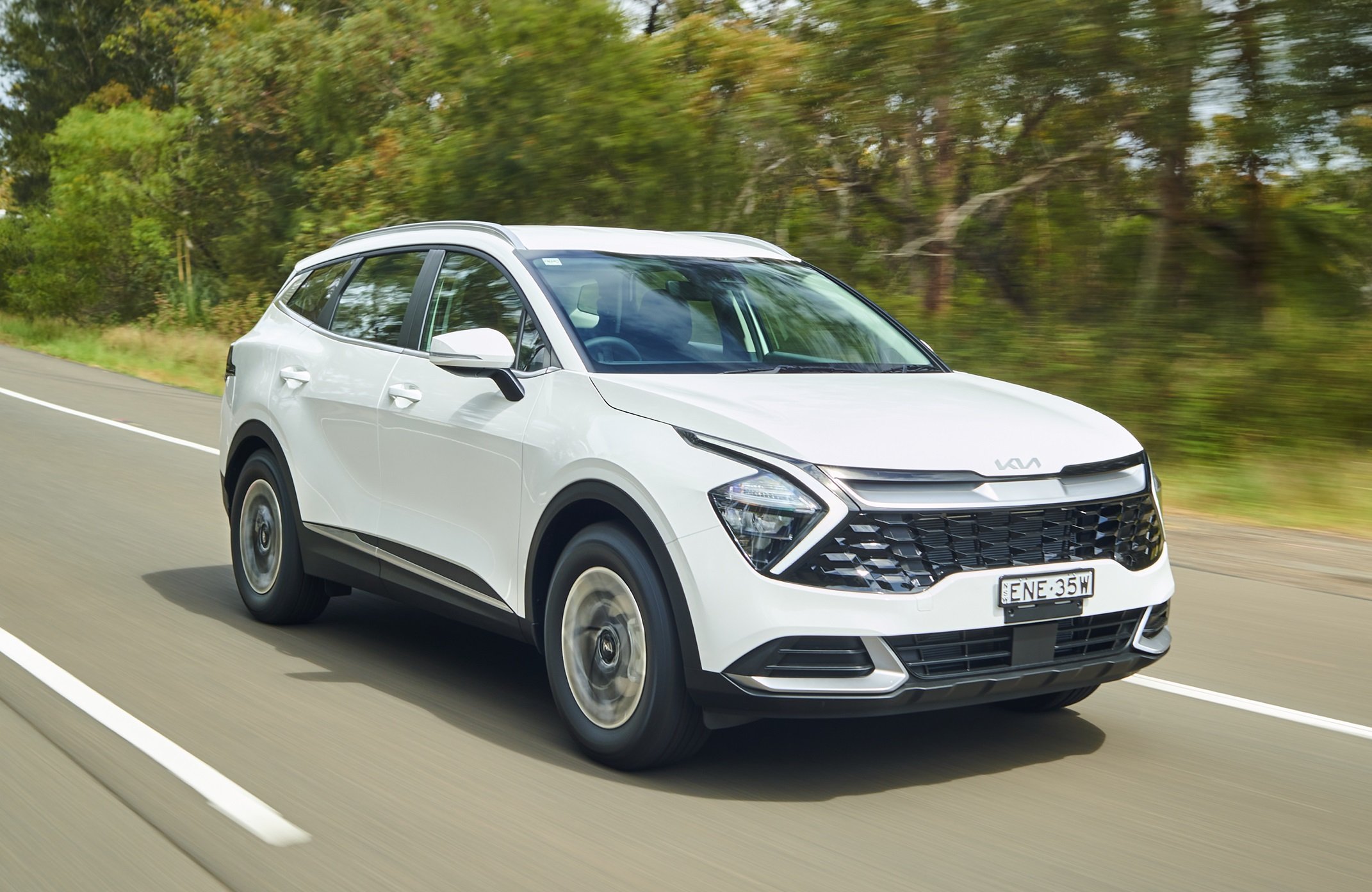
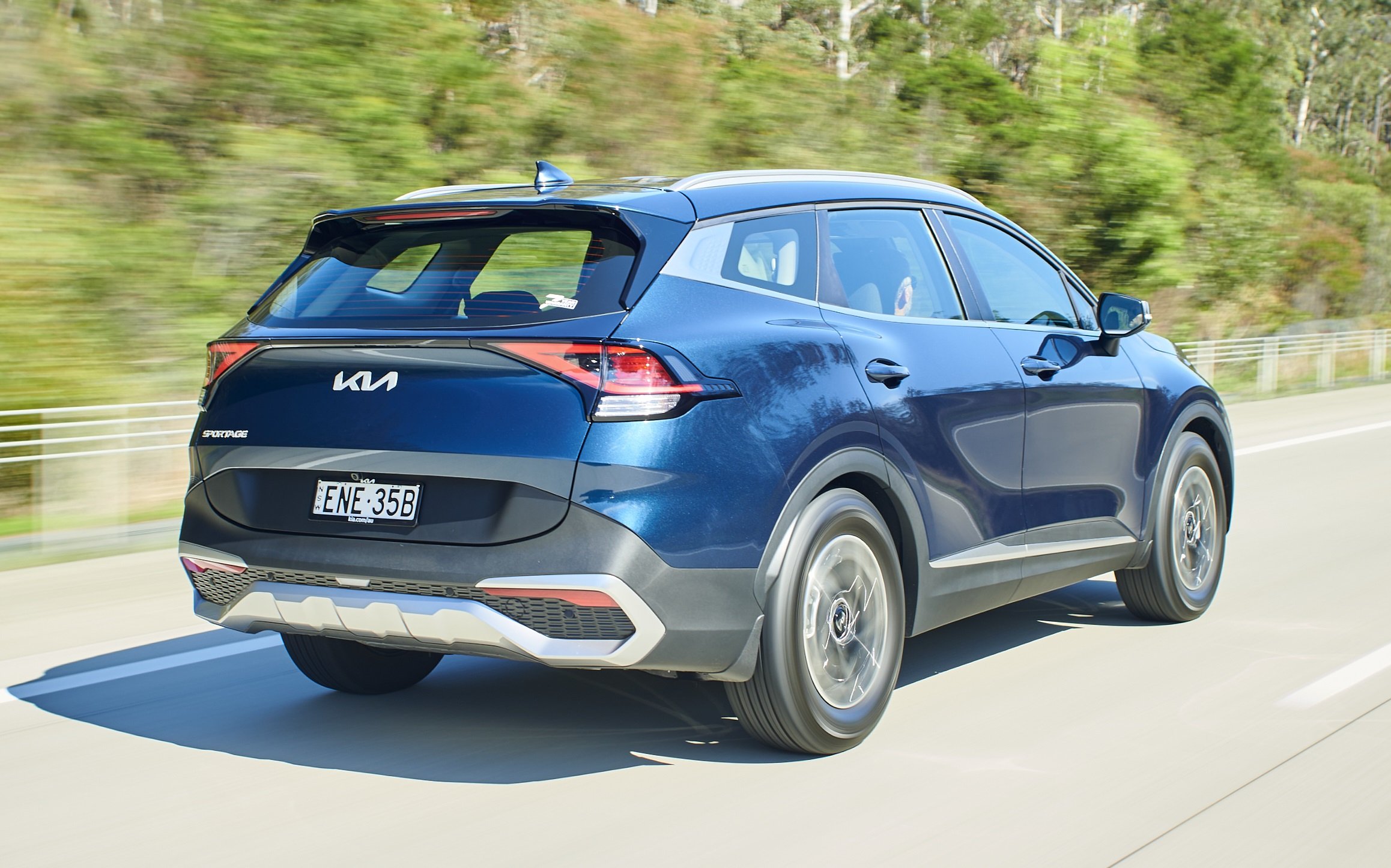
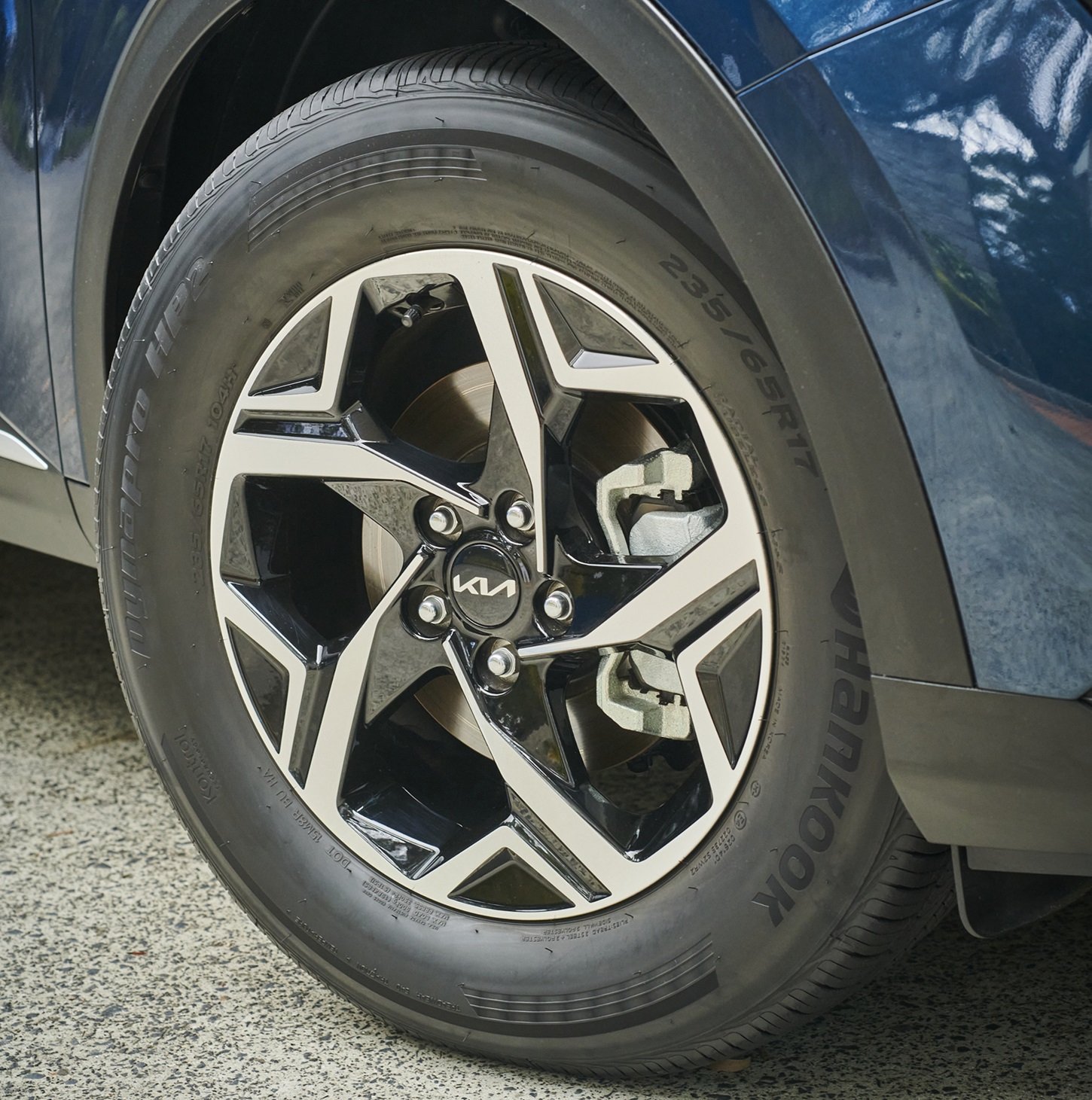
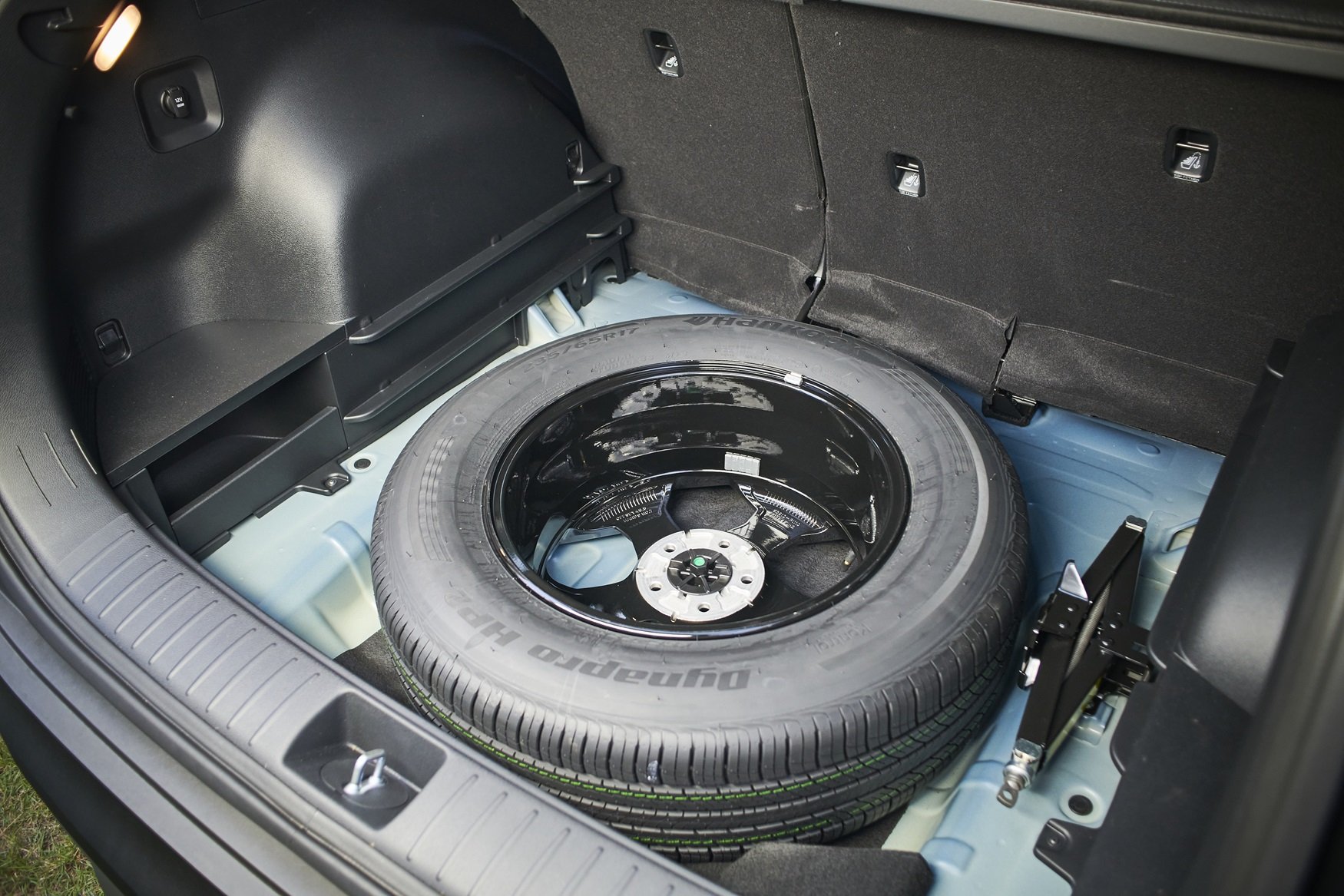
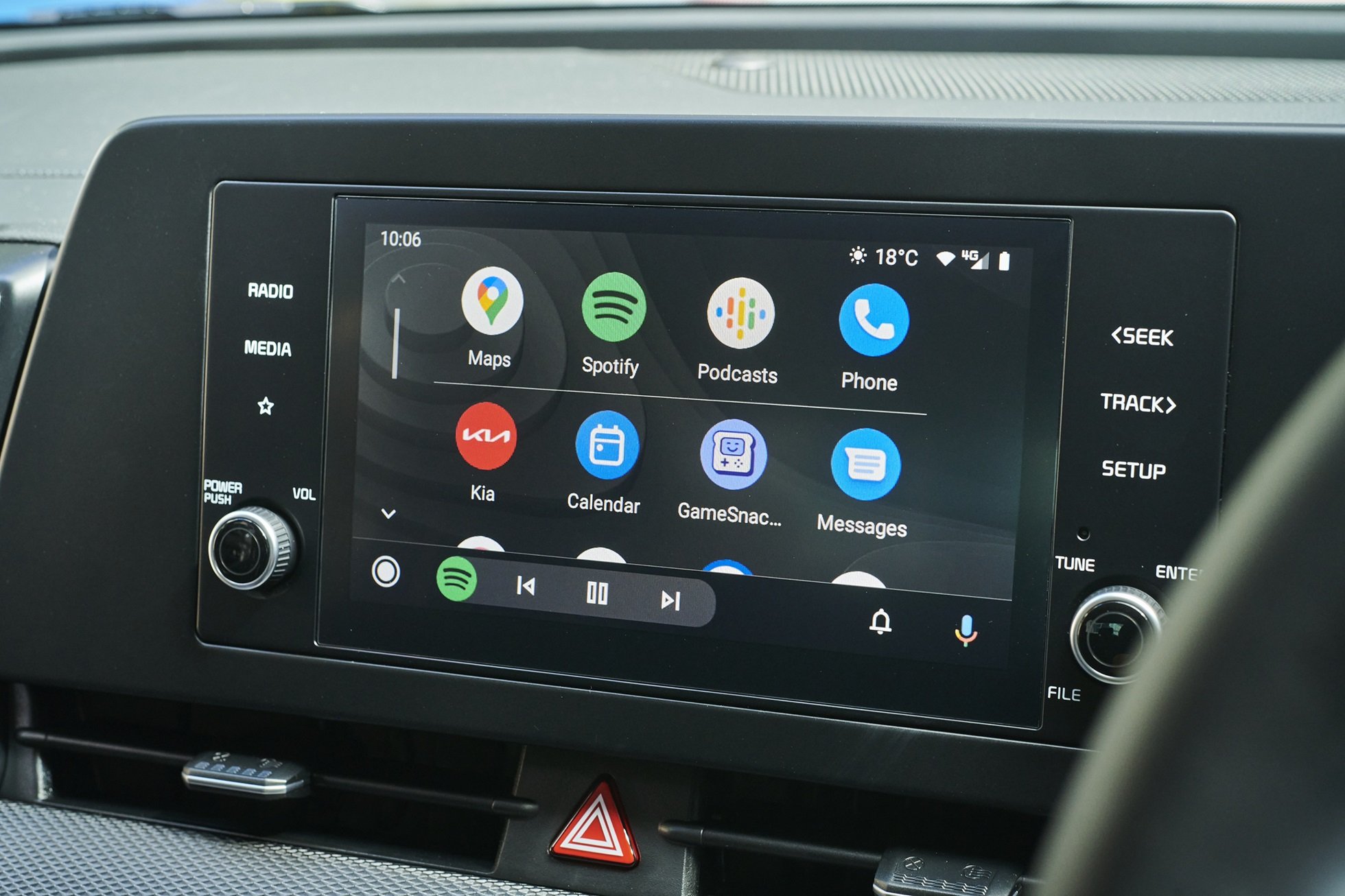
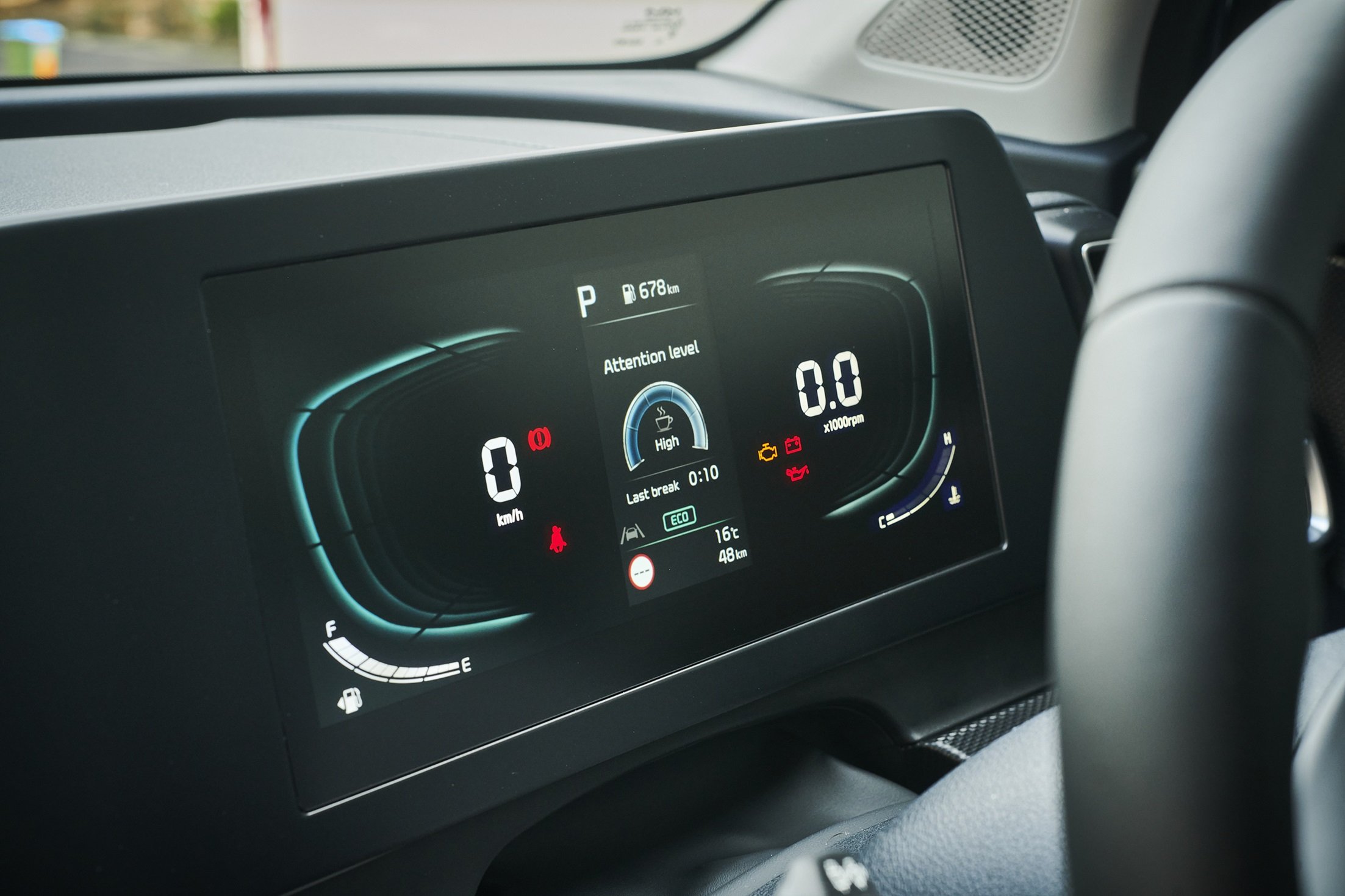

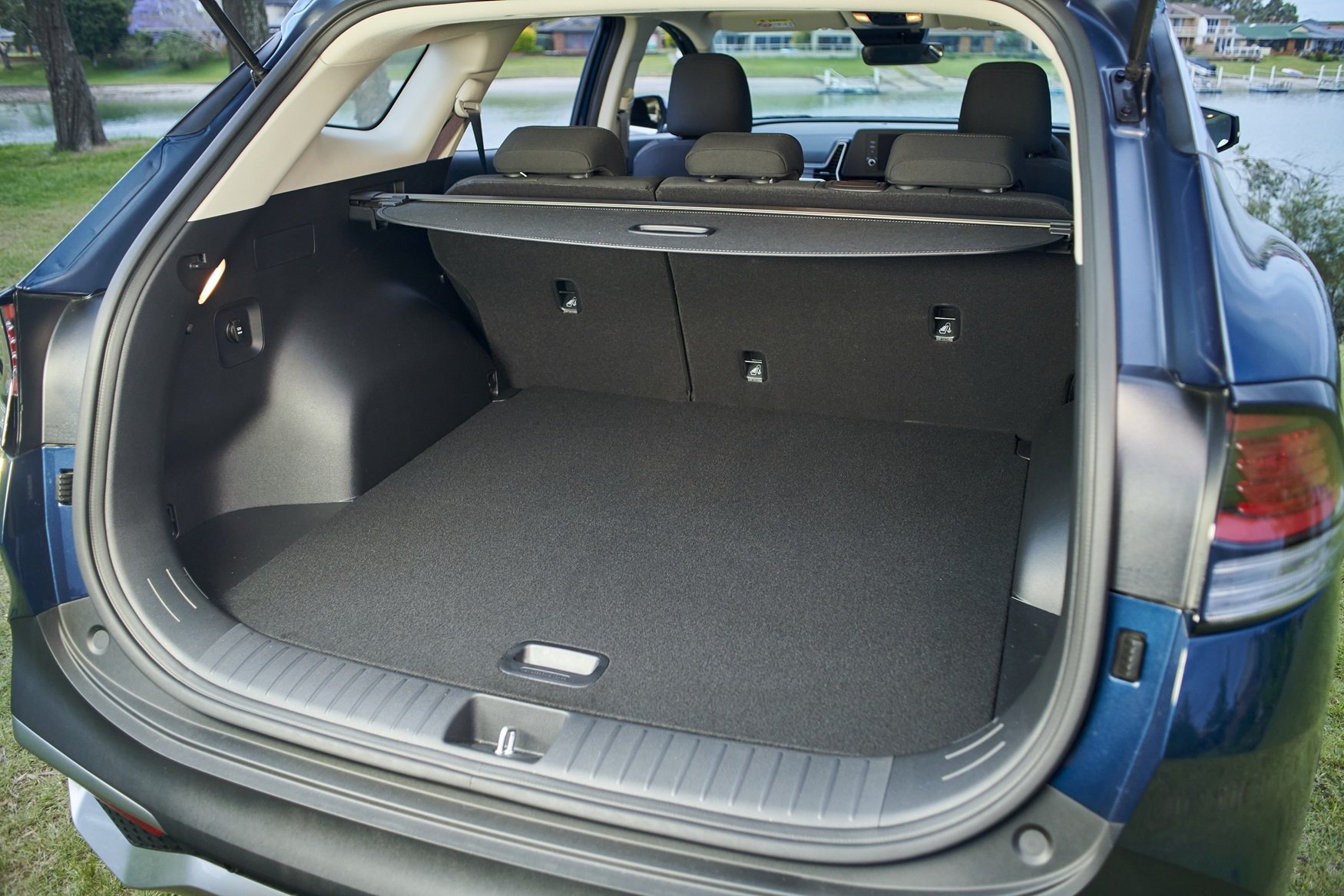

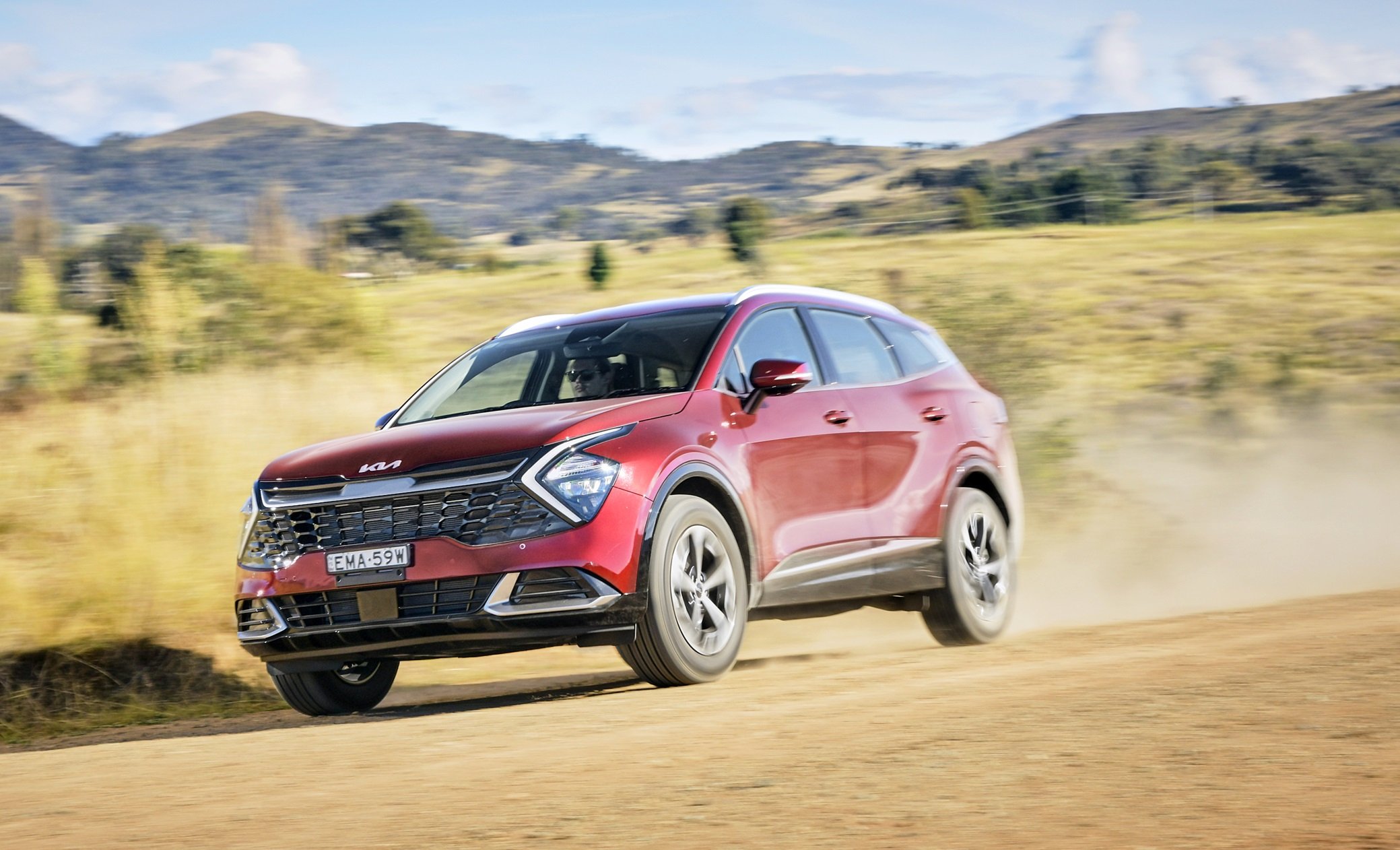

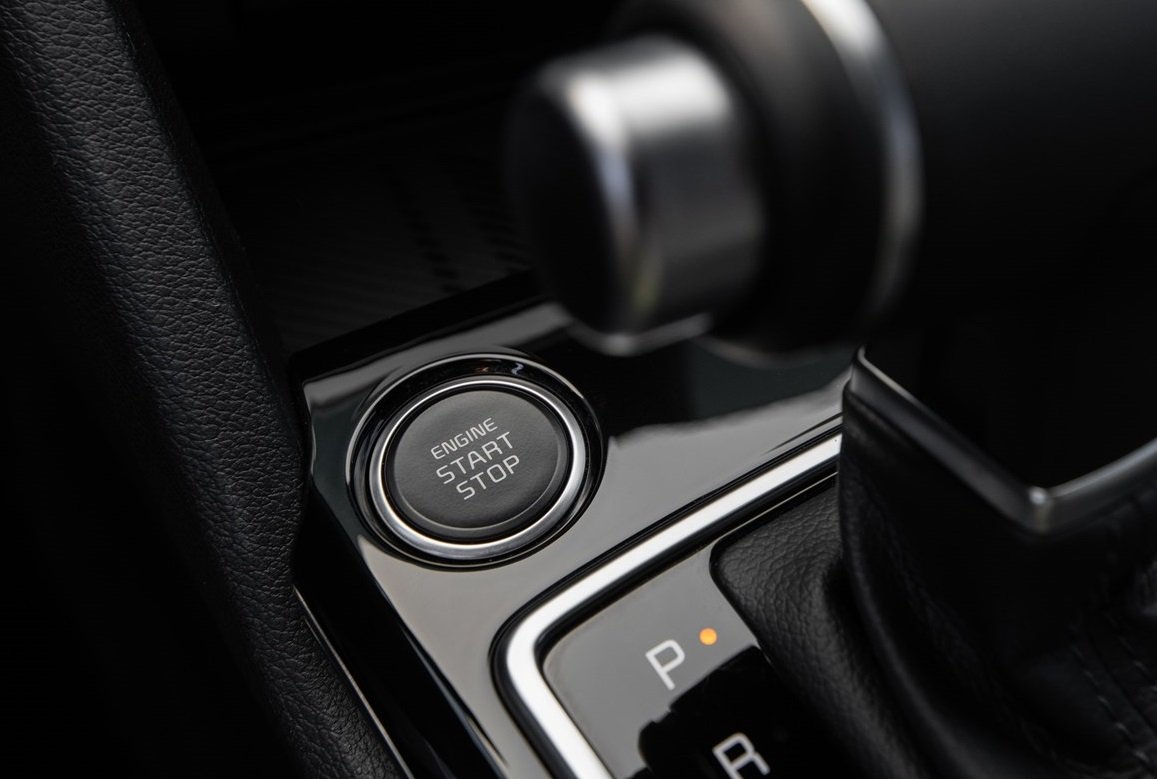
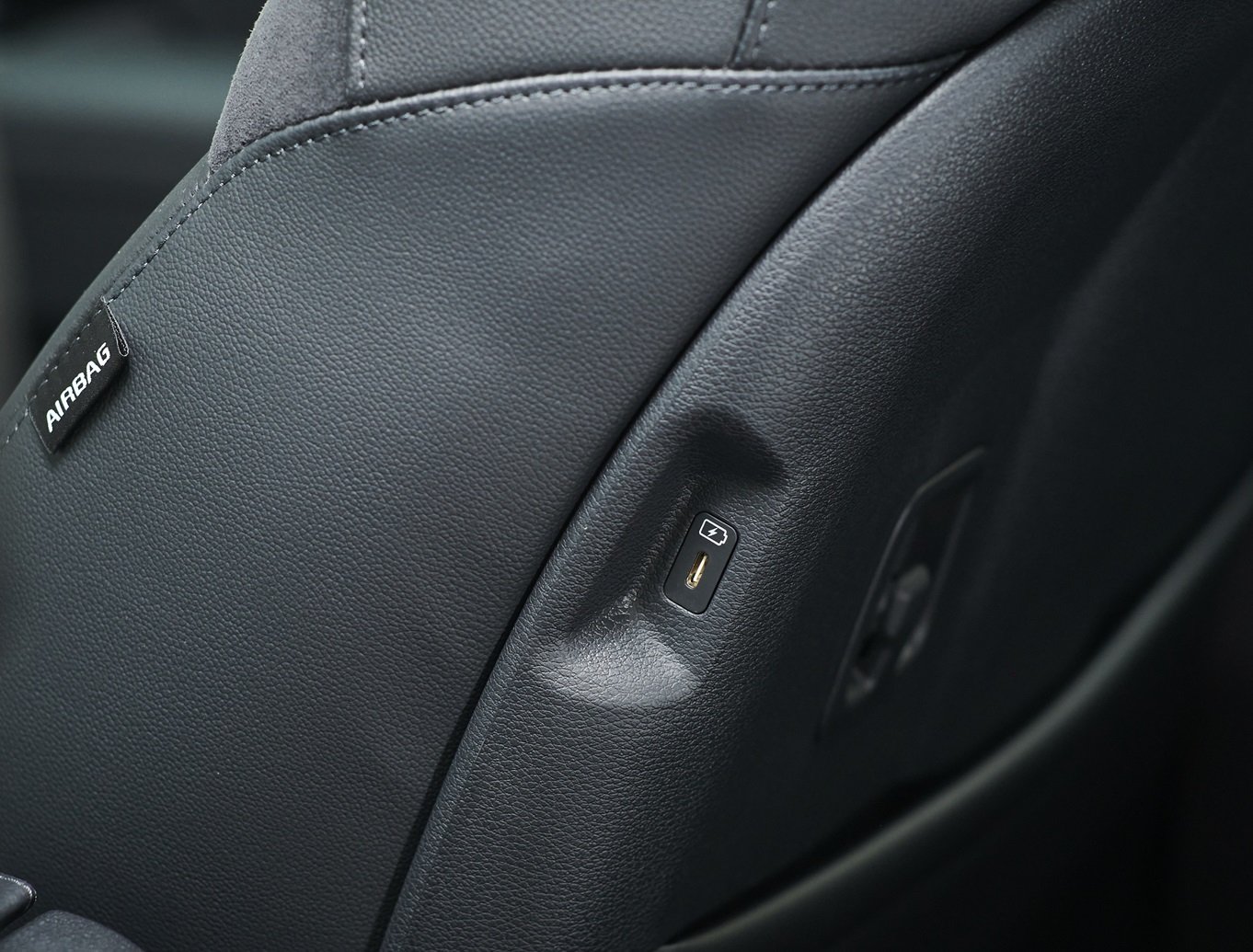
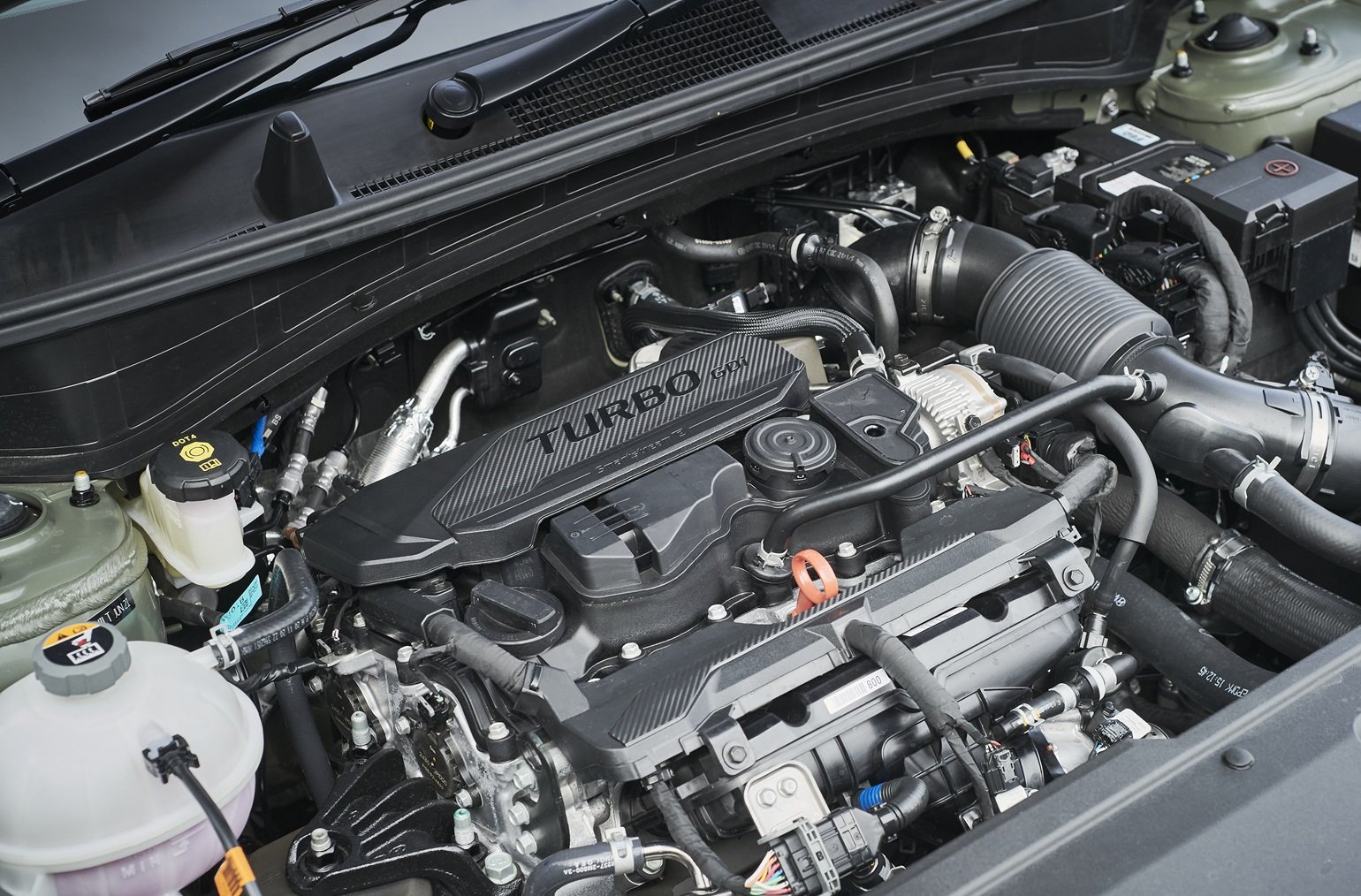









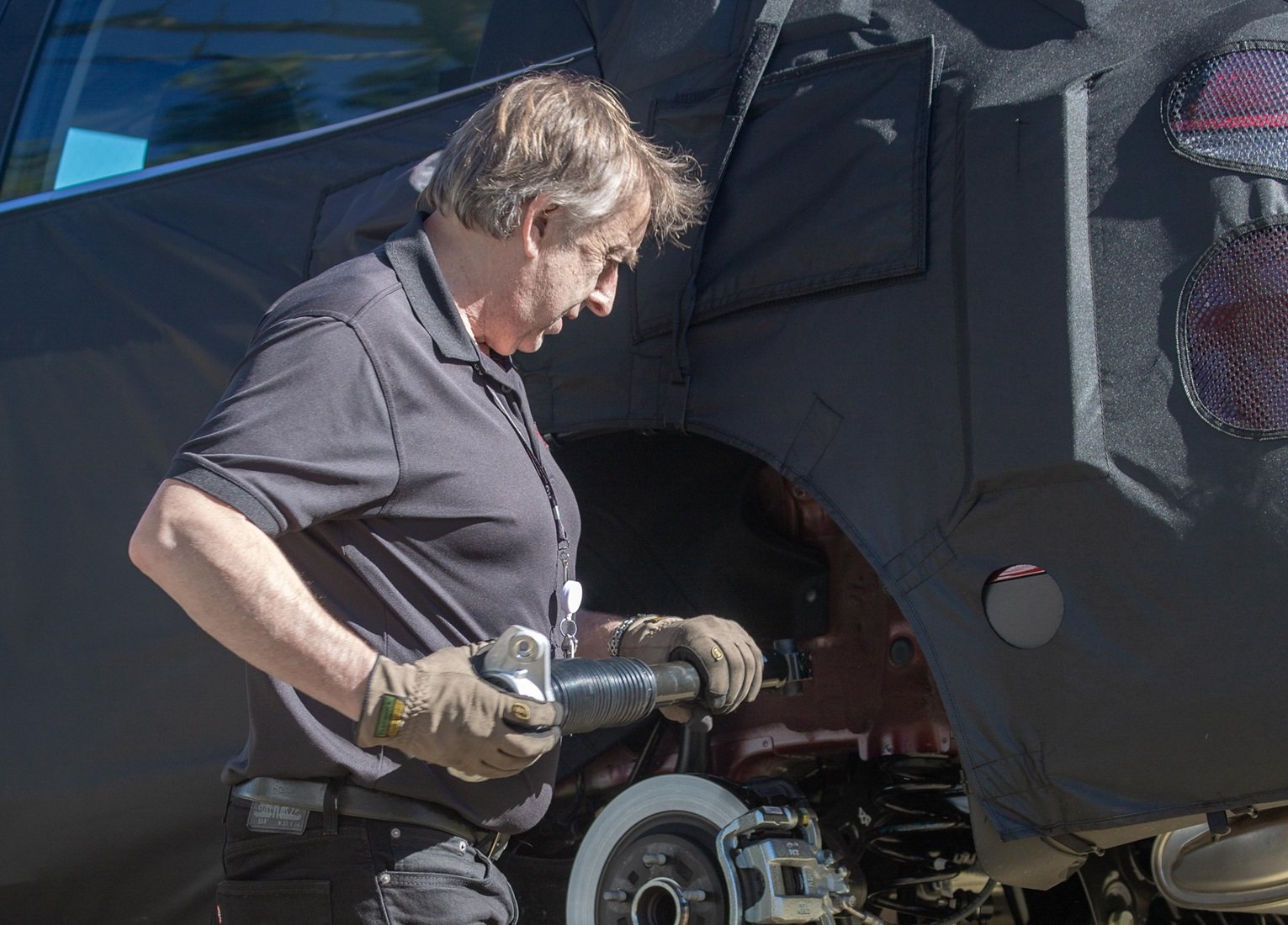
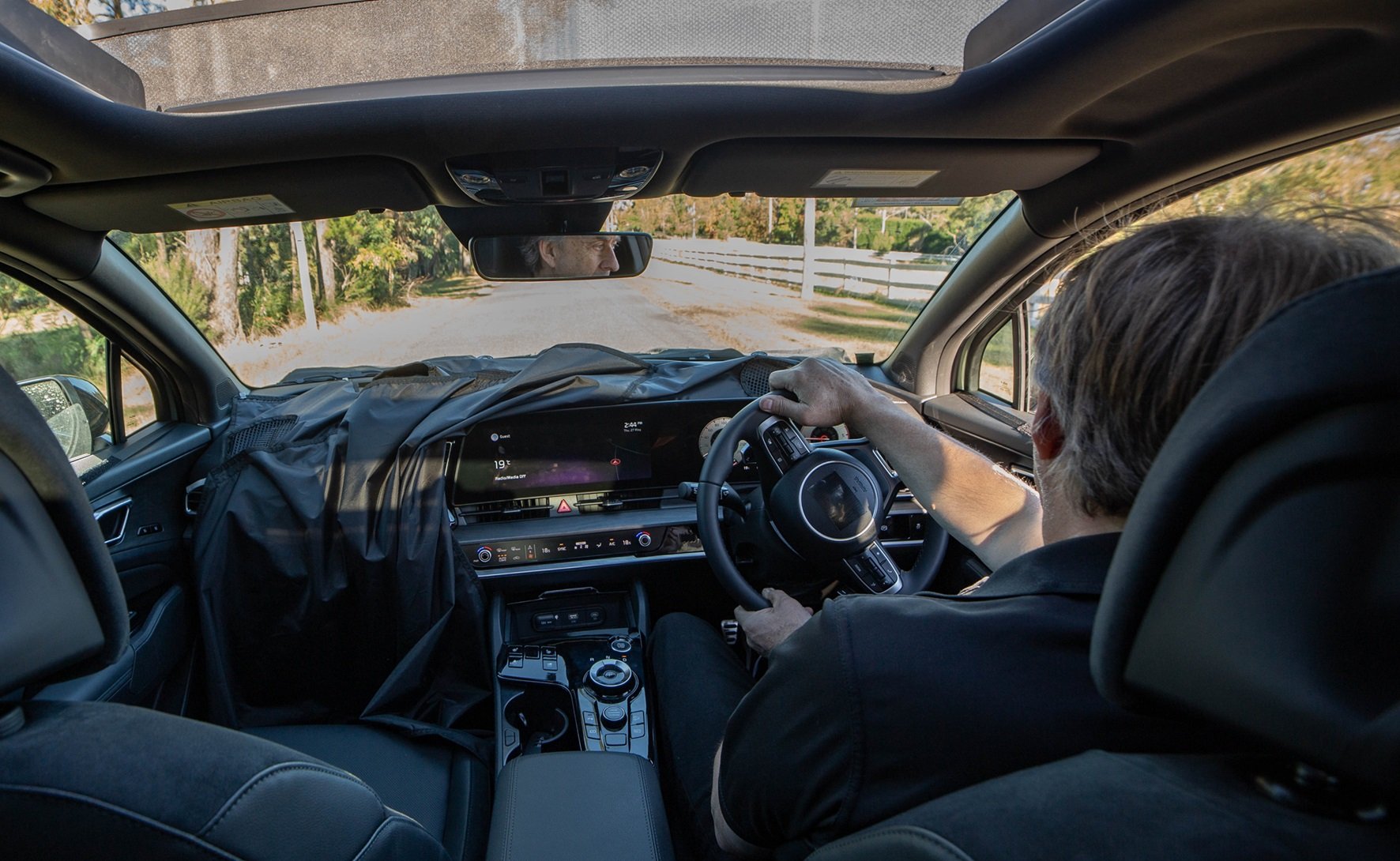
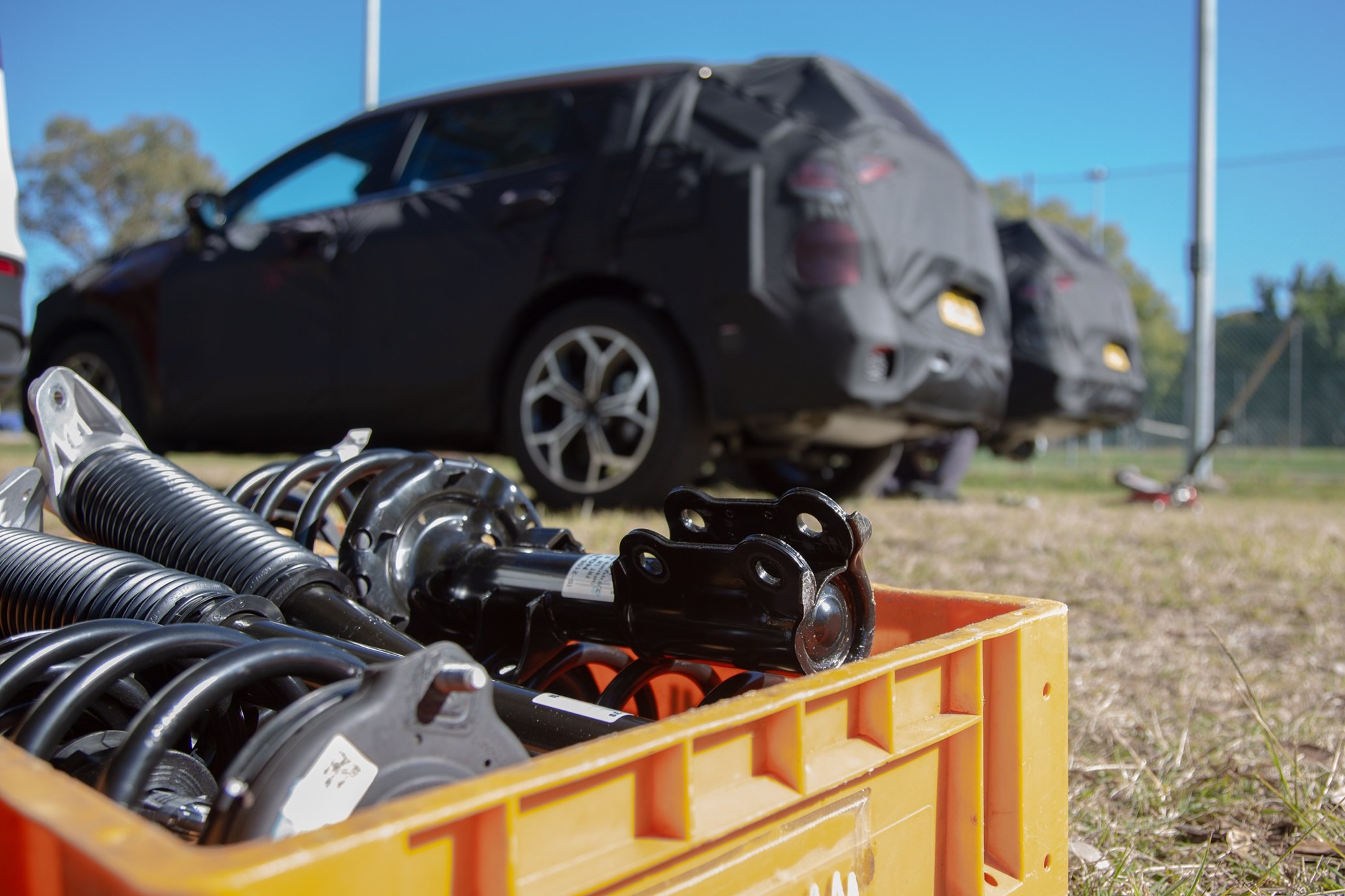
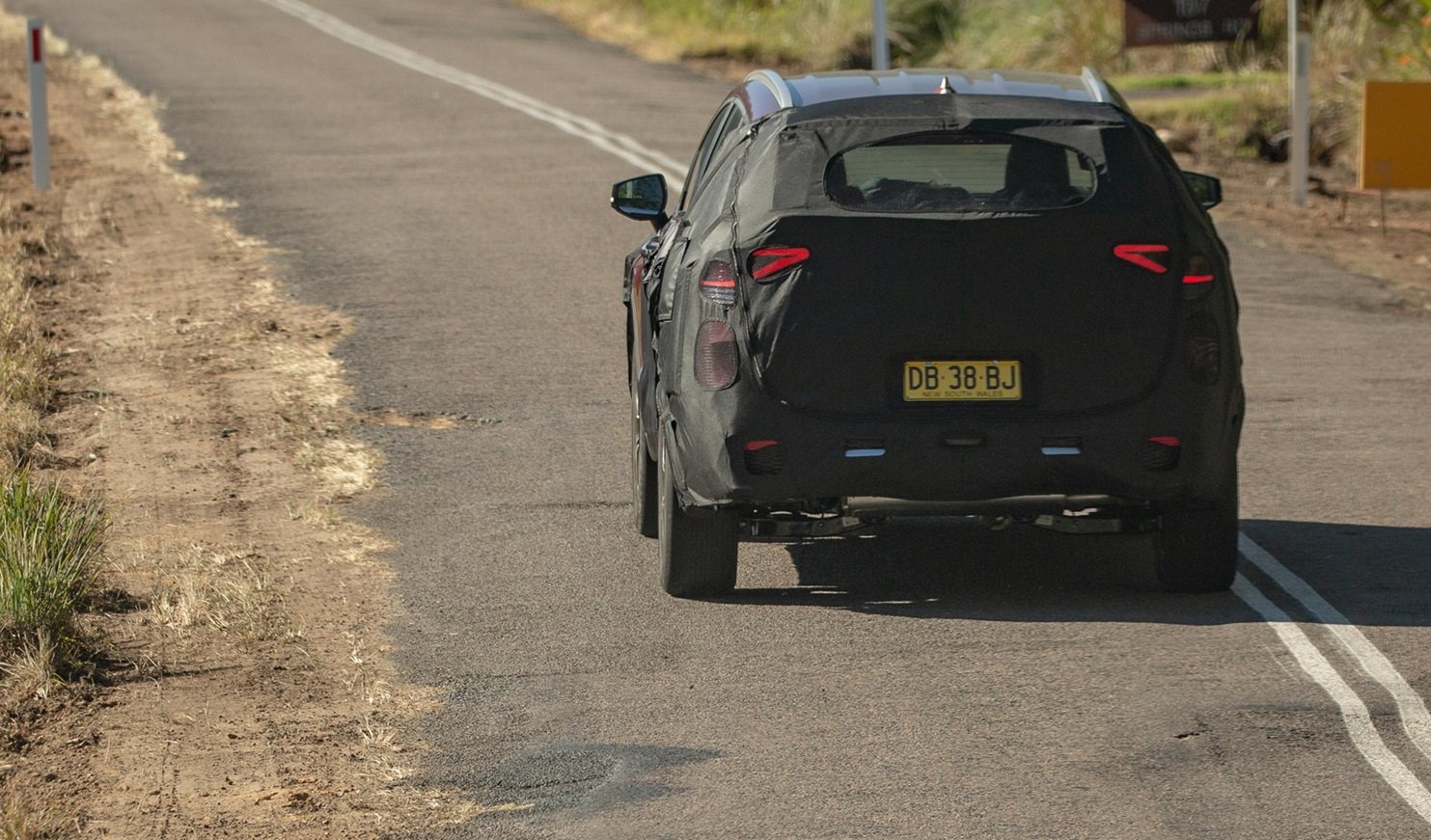



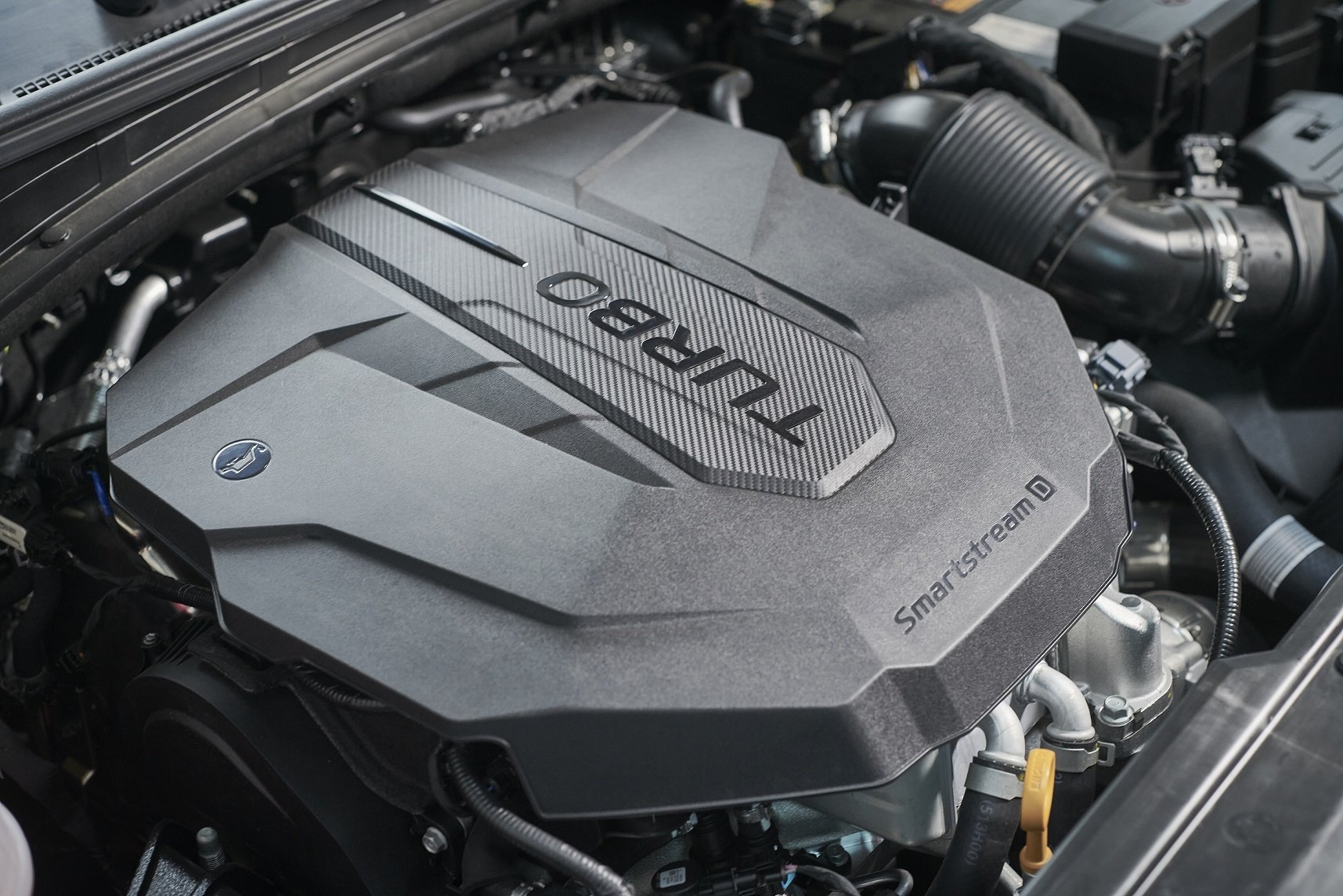
























The MG ZS is a small SUV that offers such strong value to most buyers that it should be on your shortlist be default, even when shopping for a used car. But given that no car is perfect, the price could easily distract from its drawbacks.